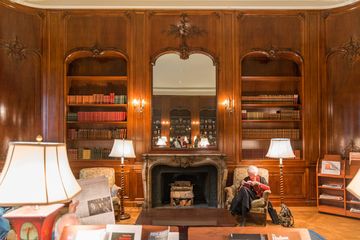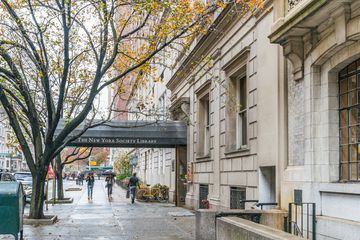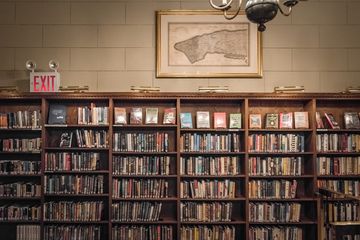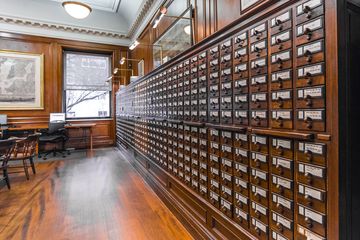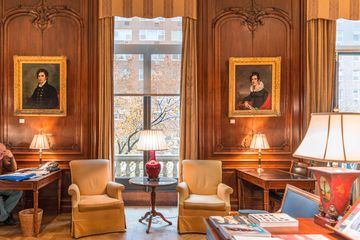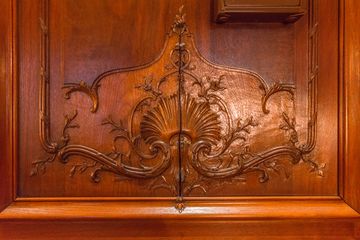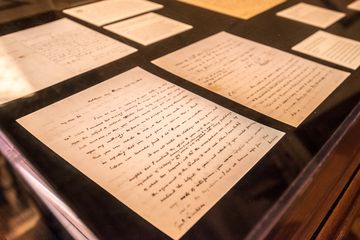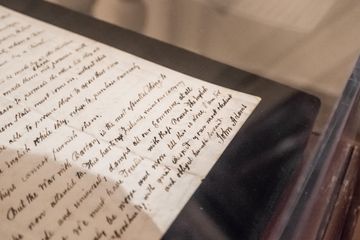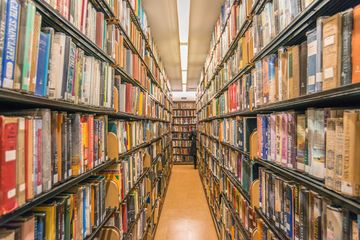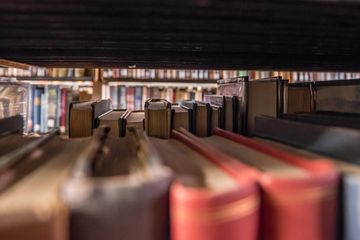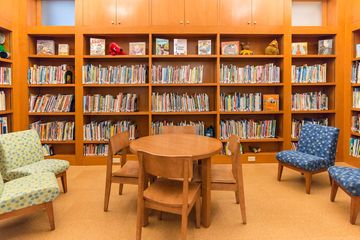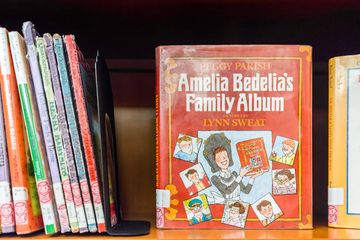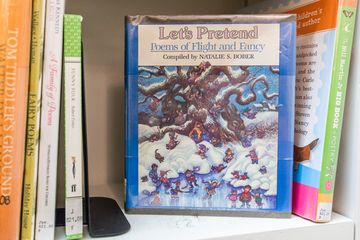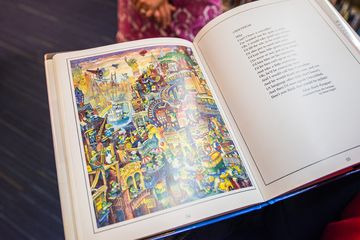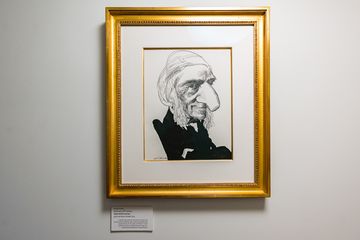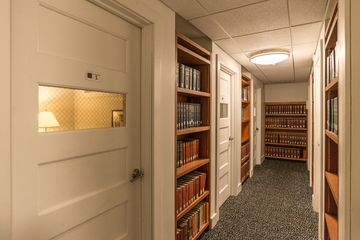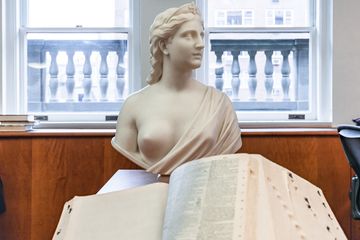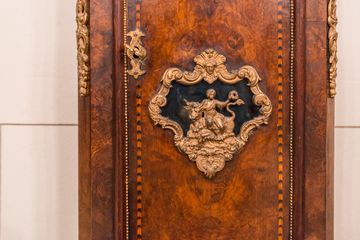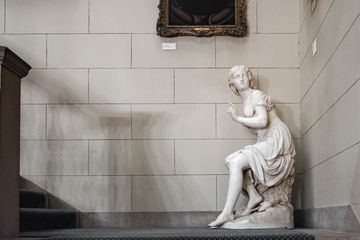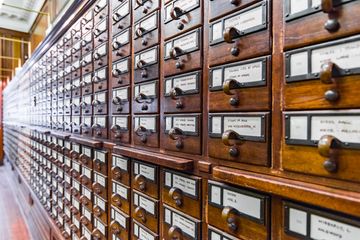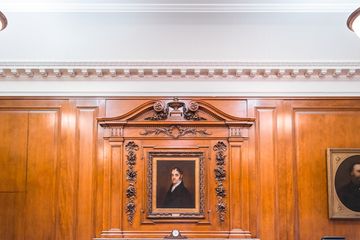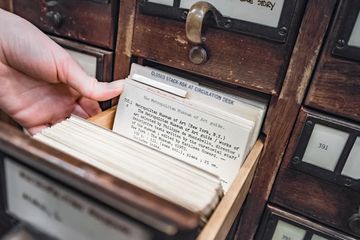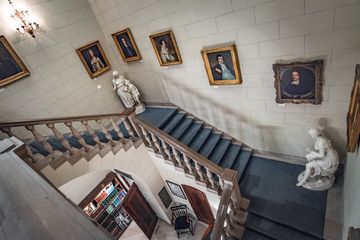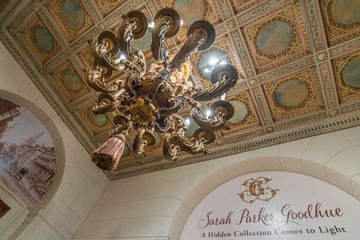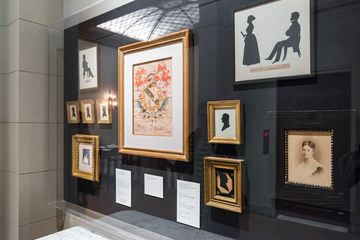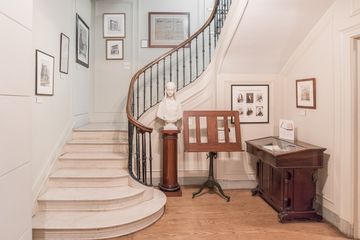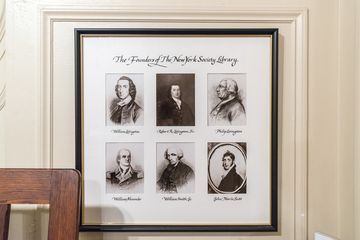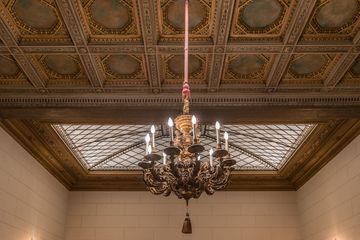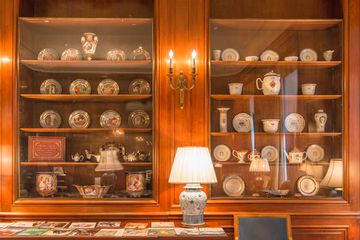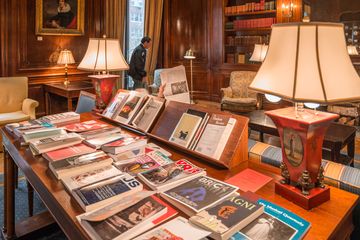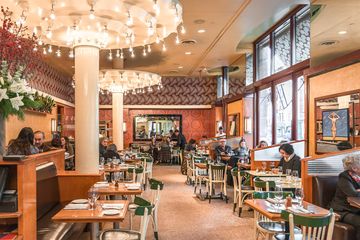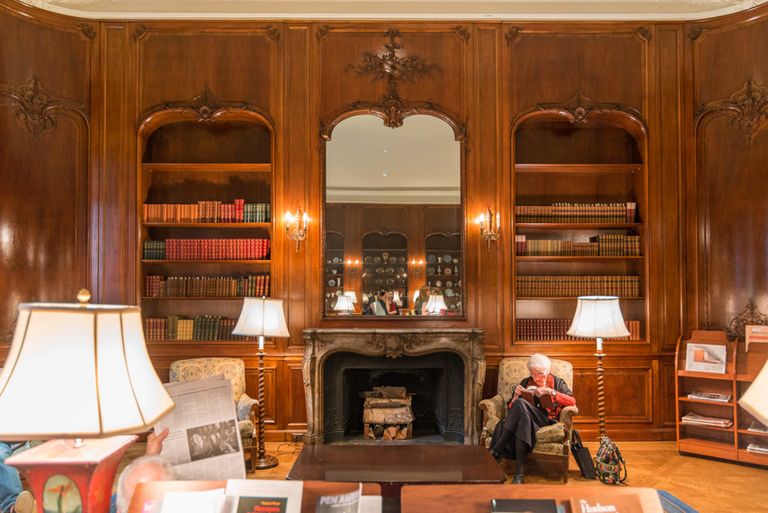
The New York Society Library is the oldest library in New York City. It was established in 1754 and was frequented by our founding fathers. Though there was technically no "Library of Congress" at that point in our nation's history, Carolyn Waters, the current head librarian, stated that the New York Society Library was the next best thing. It has had a vibrant history, having been looted by the Redcoats during the Revolution, moved among five different locations, and seen hoards of notable figures walk through its doors.
The building holds personal meaning to me, since my mother lived directly across from the library in the 1980s and used its reference room to do research for her biography of Thomas Jefferson. Spending time here with my mom in the children's room was where the initial spark developed for the two of us to open our bookstore, "Once Upon A Time." Coming back so many years later and having a personal tour with Carolyn was an absolute treat. I was thrilled to see that the old card catalogue in the reference room, containing drawers of titles and authors from 1989 and earlier, still remained. When I mentioned this to Carolyn, she quickly responded, "The librarians would chain themselves to it if you tried to remove it."
Though you must be a member to access the upper floors of the library, the gallery and certain events are open to visitors. Carolyn explained that membership has always been universal, even to women, dating back to the library's inception. As an example of female membership, Carolyn showed us the exhibit on Sarah Parker Goodhue who donated $600,000 to the library in 1917, along with pieces from her husband's family's estate. The donation allowed the library to buy the building in 1937. Prior to this, it was the private home of John Rogers. Among the pieces on display was a facsimile of a letter written by George Washington – the original is temperature controlled in the library's upper floors.
From the gallery, Carolyn led us into the Members' room where chairs were filled with readers. This room purposefully does not have WiFi, allowing members to experience an entirely analog environment. The whole back wall of the room is filled with exquisite china that was echoed in its detail by the walnut moldings on the walls and ceiling. Carolyn pointed out that the chairs and tables are the same furniture that was originally placed in the room in 1937.
We then explored the stacks, where I asked Carolyn about the library's collection strategy. She said that for a long time fiction was considered frivolous, but that they stocked some titles because "it brought people into the library." Because the library has limited space, the librarians continue to select their material very carefully, weeding out where necessary, but generally trying to hold onto the collection while still continuing to expand. I found it fascinating that there are records of what books have been taken out dating back to the library's beginning. As Carolyn said, "It's a study of the reading history of the city. We know what the founding fathers were reading."
Our next stop was the children's room, which was bright and airy and decorated with some of my favorite storybook characters. Meeting the children's librarian, I was pleased to hear that they continue to have children's authors and illustrators visit, and that many are members. While impressed by the carefully curated collection, it was when I discovered my mom's poetry anthology, Let's Pretend, Poems of Flight and Fancy on the shelf, that I became elated.
Our final stop was to the six private reading rooms. According to Carolyn they are almost always taken, and come with a row of lockers that can be reserved on a rotating six-month schedule. It was in these rooms that my mom did much of her research and writing. Around the corner, there is a larger group reading room, called the Hornblower Room. While showing us the rooms, Carolyn shared a fun story: Apparently, Wendy Wasserstein wrote about sitting in one of the smaller study rooms as a member of the library where she was soothed by the subtle dripping of an exposed pipe. Because of this, Carolyn told us that when they renovated the room a number of years ago, they chose to keep the exposed pipe. It seemed to me like a fitting detail of the library, which has kept a perfect balance of tradition and history versus technology and modernization.
